When the traveler must travel in space as well as time, life-sustaining travel food is a necessity. A food staple of the Civil War soldier was hardtack, also sometimes called worm castles due to the infestation of ‘worms’ living in the hardtack. During the war, most hardtack was made in government bakeries, but it could also easily be made at home.
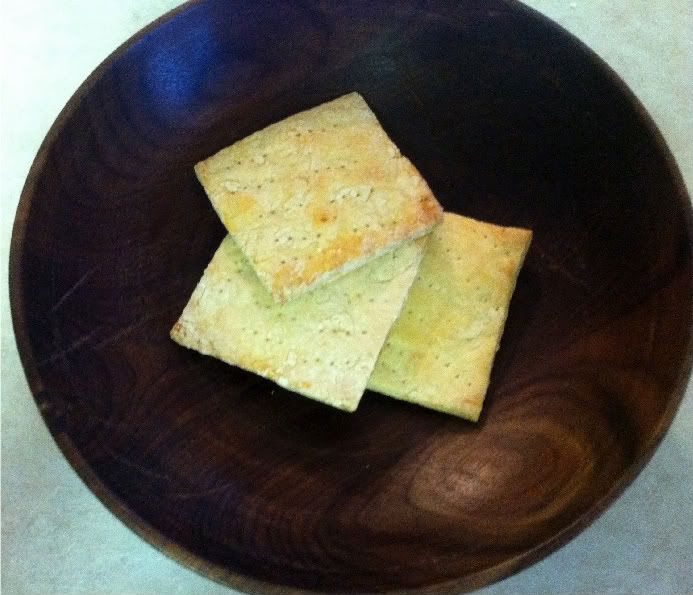
The objective with hardtack is to make a food that will not spoil or mold before it is eaten. It must also last a long time. I have made hardtack that was perfectly edible after a year in storage with no refrigeration. So what is the downside? It is bland....horribly, horribly bland. Still, it will sustain life. The secret to its long life is the lack of ingredients which are prone to spoilage.
Mix together:
5 cups of flour
1 cup of water
1 1/2 teaspoon of salt
Sometimes it is necessary to add just a bit more water, but don’t put in much! Knead the ingredients until they hang together enough to roll out with a rolling pin. I usually put the dough in a pastry cloth to help it stay together while I work on it. Roll the dough out until it is about 3/8 inch thick. This is not as simple as it sounds. This dough is rather dry and doesn’t roll easily. You’ll give your arm muscles a really good workout!
After it is rolled out, cut it into 3 inch squares, then use a fork to poke lots of holes into the hardtack.
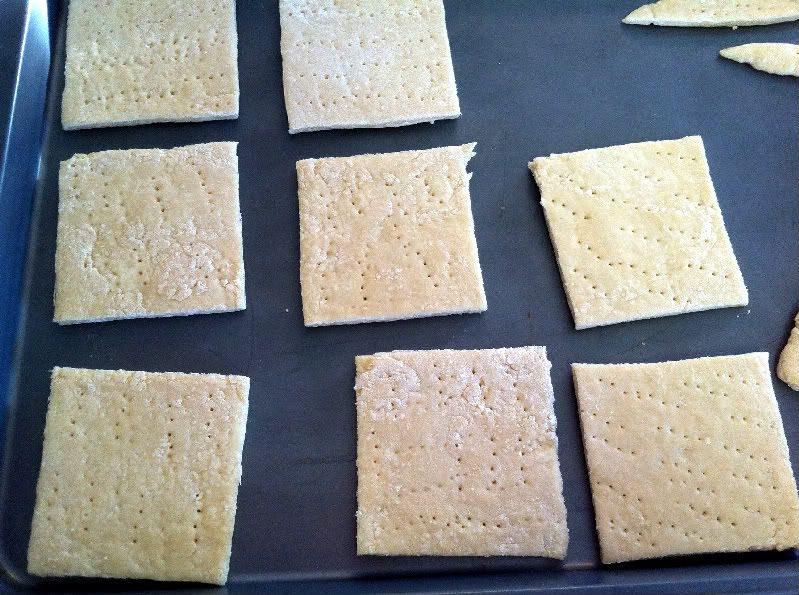
Next the hardtack must be baked until all moisture is gone. I have tried it two different ways. Way #1 is to bake it at 400 F for 30 minutes. I found it did not get quite dry all the way through. Way #2 is to bake it at 225F for about 2 hours. Whichever way you choose to do it, make sure it is completely cooked.
Once it is cooked, it is almost ready to eat....or saved for traveling.
Like soldiers anytime in history, Civil War soldiers were inventive with the ways they ate their ration of hardtack. Eating it plain is just an invitation to break a tooth. Here are 3 ways to use your hardtack. First, put your hardtack on a hard surface and use your rifle butt to crush it.
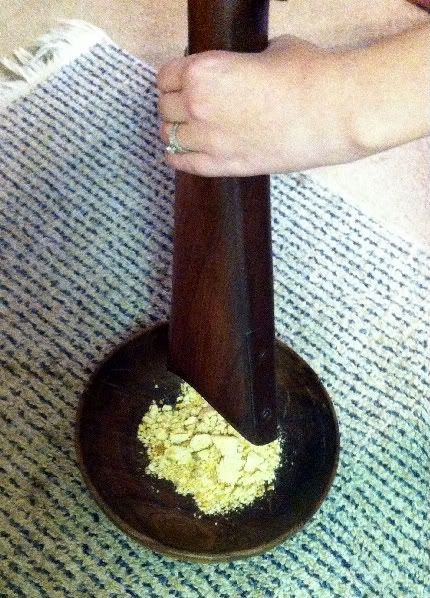
Once it is crushed you are ready to begin to prepare your meal.

1. Hardtack Mush: Mix hardtack crumbs with hot water until softened. Eat.
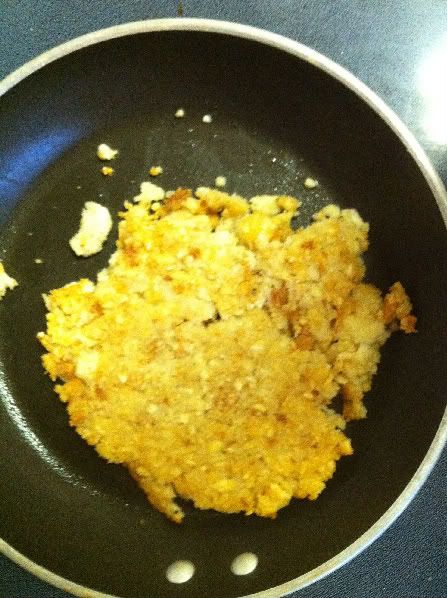
2. Hardtack Pancake: Mix hardtack crumbs with hot water until softened. Form into a little pancake and cook in pan over fire. If you can find some syrup or jam, that would go well with it.
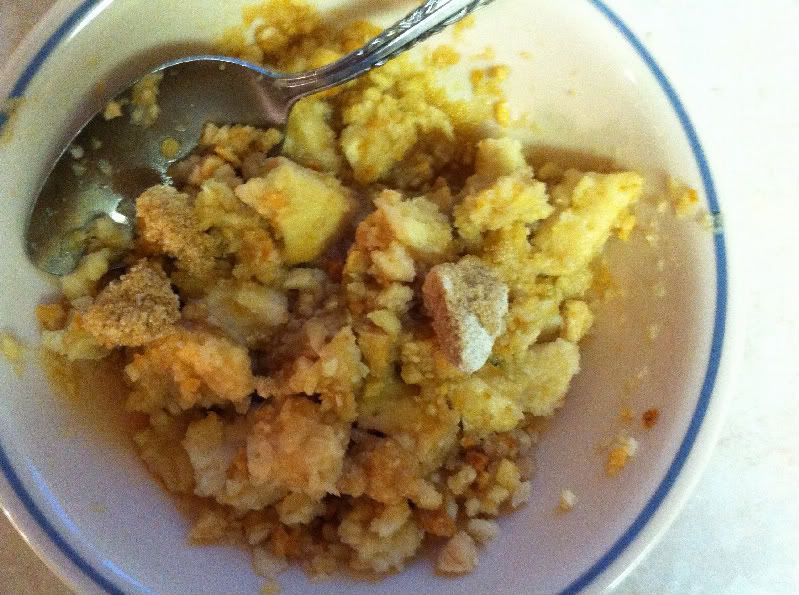
3. Hardtack Pudding: Mix hardtack crumbs with hot water until softened. Mix in a little bit of brown sugar before serving.
For a verdict, we enlisted the services of two actual soldiers in order to get a genuine reaction. To my surprise, they both ate all three items and cleaned their plates. Maybe a true soldier will just eat everything. One commented he’d had worse and he’d had better.
The least favorite was the mush. This was just warm, soggy hardtack crumbs. Still, if a person were hungry enough, it IS edible.
The easy favorite was the pancake. The crispiness from cooking made a nice texture. I’m sure the maple syrup also helped.
The pudding with the brown sugar wasn’t too bad either. In a travel situation, it would probably be easier to prepare than the pancake as it doesn’t require extra cooking.
Happy Trails to you!

17 comments:
I'm pretty sure that I love that you used a real rifle butt to crush it up.
But of course! Did you expect less?
Awesome! This came to my mind as an option for a guest post, but you did a much better job than anything I could come up with in preparation AND testing!!
Your Mom did a great job !
Gives me a better idea of what my post should look like when I get to it next month...I'm thinking of a dinner circa 1815 - 1825. Also still waiting for my family member to bring back our time machine. For some reason, I have more money in my checking account suddenly and I'm wondering if something was done in the past to beef it up ( better than not enough in there for sure ! )
I look forward to it! Anyone in your family history inexplicably win the lottery?
Your sister Bethany turned me on to your blog and I LOVE it!! It's so much fun :) I was cleaning out my pantry today and found a meal planner that Safeway put out in 1964. It's pretty cool and if you would like it e-mail me at iamspartan1337 @ hotmail. com
We are totally going to start calling American cheese Barbie cheese around here :)
Thank you, and welcome!
My 2 yr old daughter just saw the hardtack pudding and said "cookies!"
Or if you were in a hurry, you soaked it in warm water, slapped it on the blade of your bayonet, and toasted it over the fire.
Sadly, I have no bayonet to try that out, but it sounds like a good possibility!
I realize I'm late to the party, but you can also fry up some salt pork or bacon, and put your hardtack in to cook in the grease as it is, if you have scads of grease, or put the mush in the pan to fry.
It was also made into a sort of stew by crumbling pemmican or dried meat into a pot of water, (or putting your chunk of saltpork/bacon into the water, then adding the hardtack.
The easiest way to do it was to just dip it in your coffee till it was soft enough to bite and chew.
Thanks, Kate (sometimes)! Those all sound slightly edible. Which is something. ;)
The pirate in me want to soak it in rum.
The pirate in me wants to soak it in rum.
The pirate in me want to soak it in rum.
That would probably be a much more cheerful experience. And it drowns the worms so they don't wiggle on the way down!
The best hardtack was baked 3 times to assure there was no moisture left in them. They were as hard as rocks. Some was packaged in barrels for use on ships at sea. They were known as sea biscuits. The problems with them at sea were the worms, bugs and rats eating them.
Post a Comment